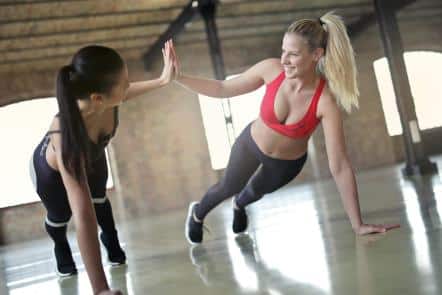Physical fitness. It’s a term thrown around gyms, doctor’s offices, and even casual conversation. But what exactly does it mean? Is it just about looking good in a swimsuit, or is there something more to it What is physical Fitness?
In this article, we’ll delve into the world of physical fitness, exploring its definition, components, and the significant benefits it offers for your overall health and well-being.
What is physical fitness?
Physical fitness goes beyond just physical appearance. It’s a state of health and well-being that allows your body to function efficiently and effectively. It encompasses the ability to perform daily activities, engage in sports or hobbies, and cope with physical challenges without undue fatigue.
Think of it as your body’s engine. The better tuned it is, the smoother it runs, allowing you to navigate life’s demands with energy and resilience.
Here’s an interesting historical perspective: Before the Industrial Revolution, physical fitness was simply about having the capacity to tackle daily tasks without feeling excessively tired or sluggish. However, with automation and modern lifestyles, the concept has evolved. Today, physical fitness is viewed as a measure of your body’s ability to:
- Function efficiently: Perform daily tasks with minimal effort.
- Maintain good health: reduce the risk of chronic diseases like heart disease, stroke, and diabetes.
- Boost immunity: Enhance your body’s natural defenses against illness.
- Handle emergencies: Respond effectively to unexpected physical demands What is physical Fitness.
The Building Blocks of Physical Fitness
Physical fitness is like a well-built house. It has several key components that work together to create a strong foundation. Here are the six health-related and five skill-related components that contribute to overall fitness:
Health-Related Components:
- Cardiorespiratory Endurance: This refers to your body’s ability to deliver oxygen to your muscles during physical activity. Activities like brisk walking, running, or swimming help improve your endurance.
- Muscular Strength: This is the ability of your muscles to exert force for a short period of time. Lifting weights, resistance bands, or bodyweight exercises can strengthen your muscles.
- Muscular endurance: This refers to your muscles’ ability to sustain repeated contractions over time. Activities like holding a plank or cycling uphill can improve muscular endurance.
- Body Composition: This is the ratio of lean body mass (muscles, bones, and organs) to fat mass. Maintaining a healthy body composition reduces your risk of chronic diseases.
- Flexibility: This is the range of motion in your joints. Stretching exercises can improve flexibility, which helps to prevent injuries and maintain good posture.
- Balance: This is your ability to maintain your center of gravity and prevent falls. Balancing exercises like yoga or standing on one leg can improve your balance What is physical Fitness.
Skill-Related Components:
- Agility: This is your ability to change direction and speed quickly. Activities like agility drills or sports like tennis can improve your agility.
- Coordination: This is your ability to use different body parts together smoothly. Dance, martial arts, or juggling can help improve coordination.
- Power: This is the ability to combine strength and speed for explosive movements. Plyometric exercises like jumping jacks or box jumps can improve power.
- Reaction Time: This is the time it takes for your body to react to a stimulus. Reaction time drills or certain sports can improve reaction time.
- Speed: This is the ability to move your body from one place to another quickly. Sprinting or running drills can improve speed.
While all the components are important, the specific focus may vary depending on your individual goals and needs. An athlete training for a marathon will prioritize cardiorespiratory endurance and muscular endurance, while an older adult might focus on balance and flexibility to prevent falls What is physical Fitness.
The Benefits of Being Physically Fit
The rewards of physical fitness extend far beyond just looking good on the outside. Here are some of the many benefits you can reap from incorporating regular physical activity into your life:
- Improved Physical Health: Exercise strengthens your heart, lungs, and muscles, reducing your risk of chronic diseases like heart disease, stroke, diabetes, and some types of cancer.
- Enhanced Mental Well-Being: Physical activity has a positive impact on your mood, reducing stress, anxiety, and symptoms of depression. Exercise also promotes better sleep quality.
- Stronger Bones and Muscles: Regular exercise helps maintain bone density, reducing the risk of osteoporosis. It also strengthens muscles, improving functional ability and reducing the risk of falls.
- Increased Energy Levels: Being physically fit gives you more energy to tackle your daily tasks and activities.
- Weight management: Exercising aids in calorie burning and weight maintenance.
Boosted Confidence
Achieving fitness goals and seeing What is physical Fitness.




